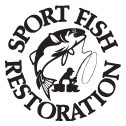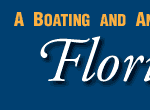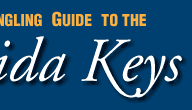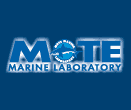CONTACT US:
Florida Fish and Wildlife
Conservation Commission
Fish and Wildlife
Research Institute
100 Eighth Avenue SE
St. Petersburg, Florida 33701
727-896-8626
|
|
|
Mote Marine Laboratory
Tropical Research Laboratory
24244 Overseas Hwy.
Summerland Key, FL 33042
305-745-2729
|
|
|

|
|
This project was funded in part by a grant awarded from Mote Marine Laboratory's Protect Our Reefs Grants Program, which is funded by proceeds from the sale of the Protect Our Reefs specialty license plate. Learn more at .
|

|
|
Additional funding for this project was obtained through the Federal Aid in Sport Fish Restoration Fund.
|
|
|
 |
The Florida Keys are home to four National Wildlife Refuges (NWR) and are administered by the U.S. Fish and Wildlife Service as part of the Florida Keys National Wildlife Refuges. These refuges protect the habitat that is home to Key deer, American crocodile, Lower Keys marsh rabbit, and silver rice, as well as native and migratory birds, sea turtles and tortoises, and plants. Many of these species are classified as threatened or endangered.
Wildlife-dependent activities including fishing and wildlife observation are allowed in the refuges using traditional watercraft; however, the use of personal watercraft (PWC), airboats, hovercrafts, water-skiing, and landing of aircrafts or ultra-lights is prohibited within the boundaries of Key West and Great White Heron National Wildlife Refuges. Buoys and signs (PDF) are placed in areas important to wildlife and for human safety. There are three types of zones:
- Vessel Exclusion and No Entry Zone - Area closed to all boat and visitor access
- Combustion Vessel Exclusion, No Motor Zone - Use of internal combustion engine is not allowed
- Idle Speed Zone - Watercraft must operate at no greater that idle speed
For more information about the Florida Keys National Wildlife Refuges, stop by the National Key Deer Refuge's Visitor Center on Big Pine Key or visit the refuge weblinks below. For more information about the National Wildlife Refuge System, please visit the U.S. Fish and Wildlife Service home page.
|
Crocodile Lake National Wildlife Refuge
Crocodile Lake National Wildlife Refuge was established in 1980 to protect critical breeding and nesting habitat for the endangered American crocodile and other wildlife. The refuge is located in north Key Largo and is currently comprised of 6,700 acres including 650 acres of open water. It contains a mosaic of habitat types including tropical hardwood hammock, mangrove forest, and salt marsh. These habitats are critical for hundreds of plants and animals including six federally-listed species. Due to the small size of the refuge and sensitivity of the habitat and wildlife to human disturbance, the refuge is closed to general public use.
|
National Key Deer Refuge
The National Key Deer Refuge was established in 1957 to protect and preserve Key deer and other wildlife resources in the Florida Keys. The refuge is located in the lower Florida Keys and currently consists of approximately 9,200 acres of land that includes pine rockland forests, tropical hardwood hammocks, freshwater wetlands, salt marsh wetlands, and mangrove forests. These natural communities are critical habitat for hundreds of endemic and migratory species including 17 federally-listed species such as Key deer, lower Keys marsh rabbit, and silver rice rat.
|
Great White Heron National Wildlife Refuge
Great White Heron National Wildlife Refuge was established in 1938 as a haven for great white herons, migratory birds, and other wildlife. The refuge is located in the lower Florida Keys and consists of almost 200,000 acres of open water and islands that are north of the primary Keys from Marathon to Key West. The islands account for approximately 7,600 acres and are primarily mangroves with some of the larger islands containing pine rockland and tropical hardwood hammock habitats. This vast wilderness area, known locally as the "backcountry," provides critical nesting, feeding, and resting areas for more than 250 species of birds.
|
Key West National Wildlife Refuge
Key West National Wildlife Refuge was established in 1908 by President Theodore Roosevelt as a preserve and breeding ground for native birds and other wildlife. This refuge was the first established in the Florida Keys and one of the earliest refuges in the United States. The refuge encompasses more than 200,000 acres with only 2,000 acres of land. The area is home to more than 250 species of birds and is important for sea turtle nesting. The islands are predominately mangrove with a few beaches and salt ponds.
|
|
If you are out snorkeling, diving, fishing, paddling, or boating and see anything that may be unusual or out of the ordinary (including lionfish) in the waters around the Keys , please record the location, date, and time, and contact the Marine Ecosystem Event Response and Assessment (MEERA) project. They can be reached by phone (305-395-8730), e-mail, or online.
If you have any questions, comments, or suggestions about this Web site, please e-mail us at Boating_Guides@MyFWC.com.
Would you like to receive notices of changes to this Web site and the Boating and Angling Guides to the Upper, Middle, or Lower Keys? If so, please e-mail us and include SUBSCRIBE-KEYS in the subject line.
|






















